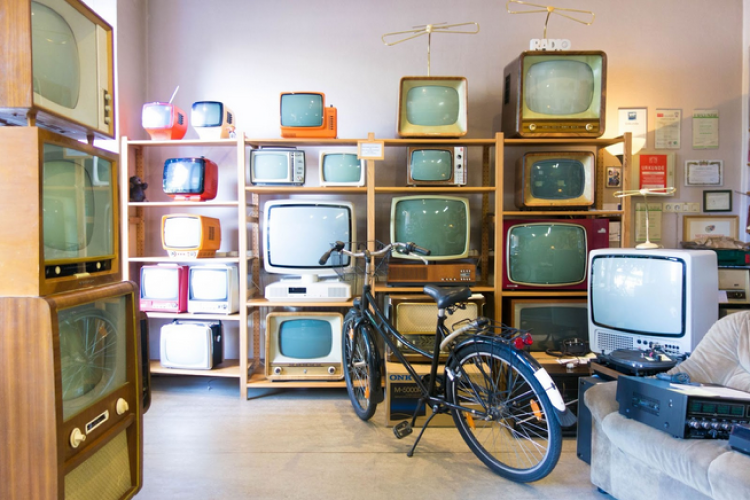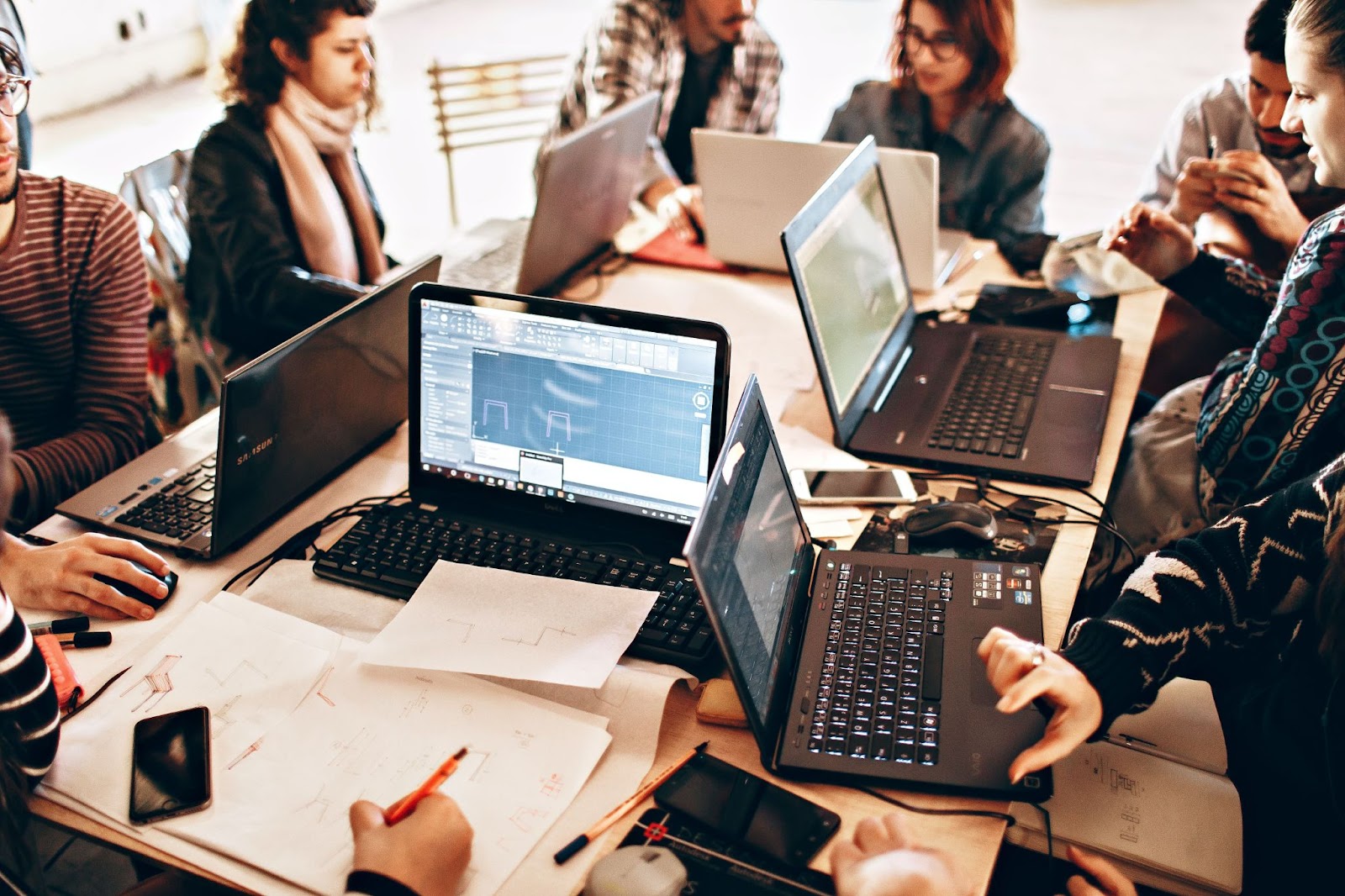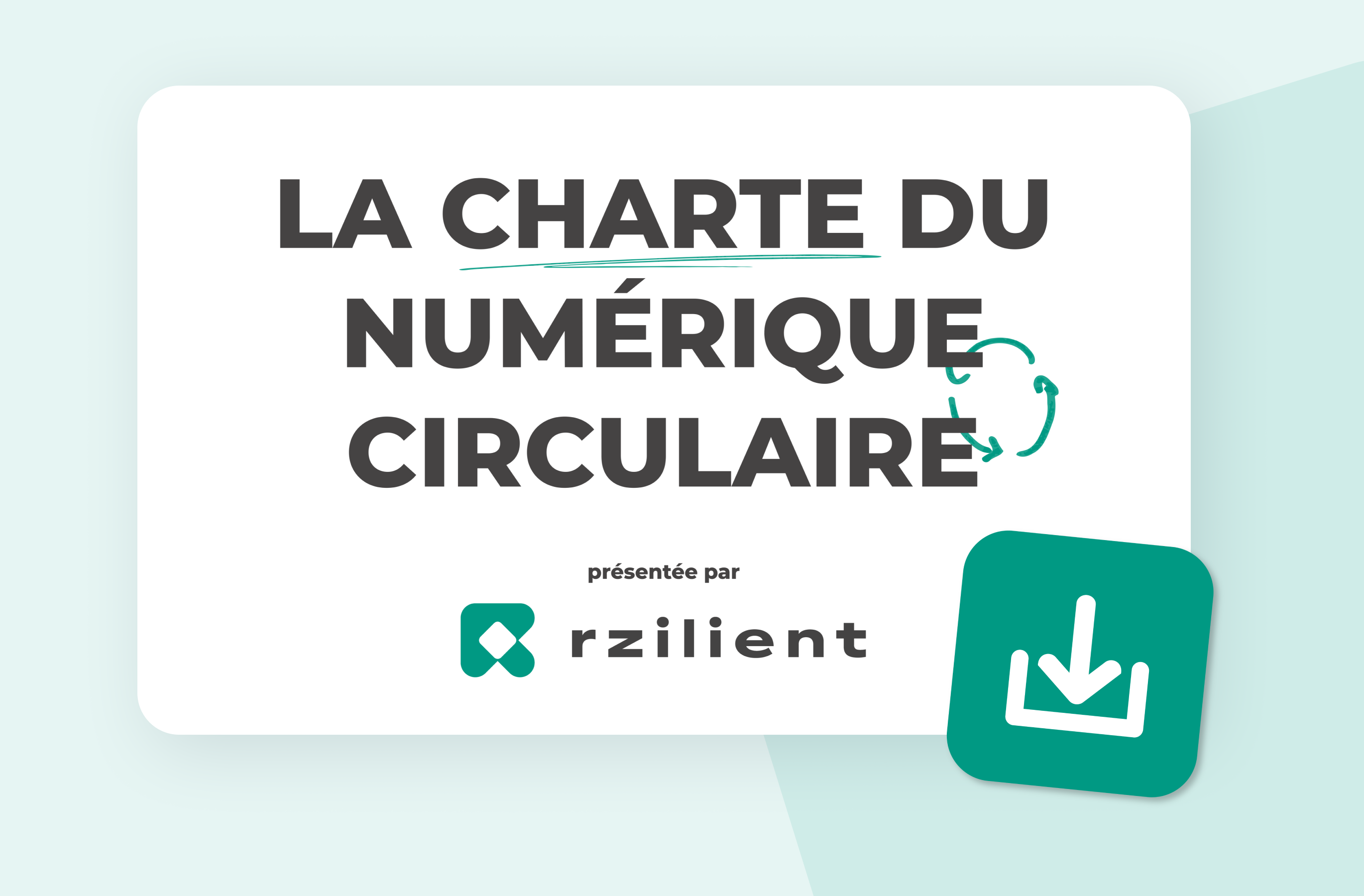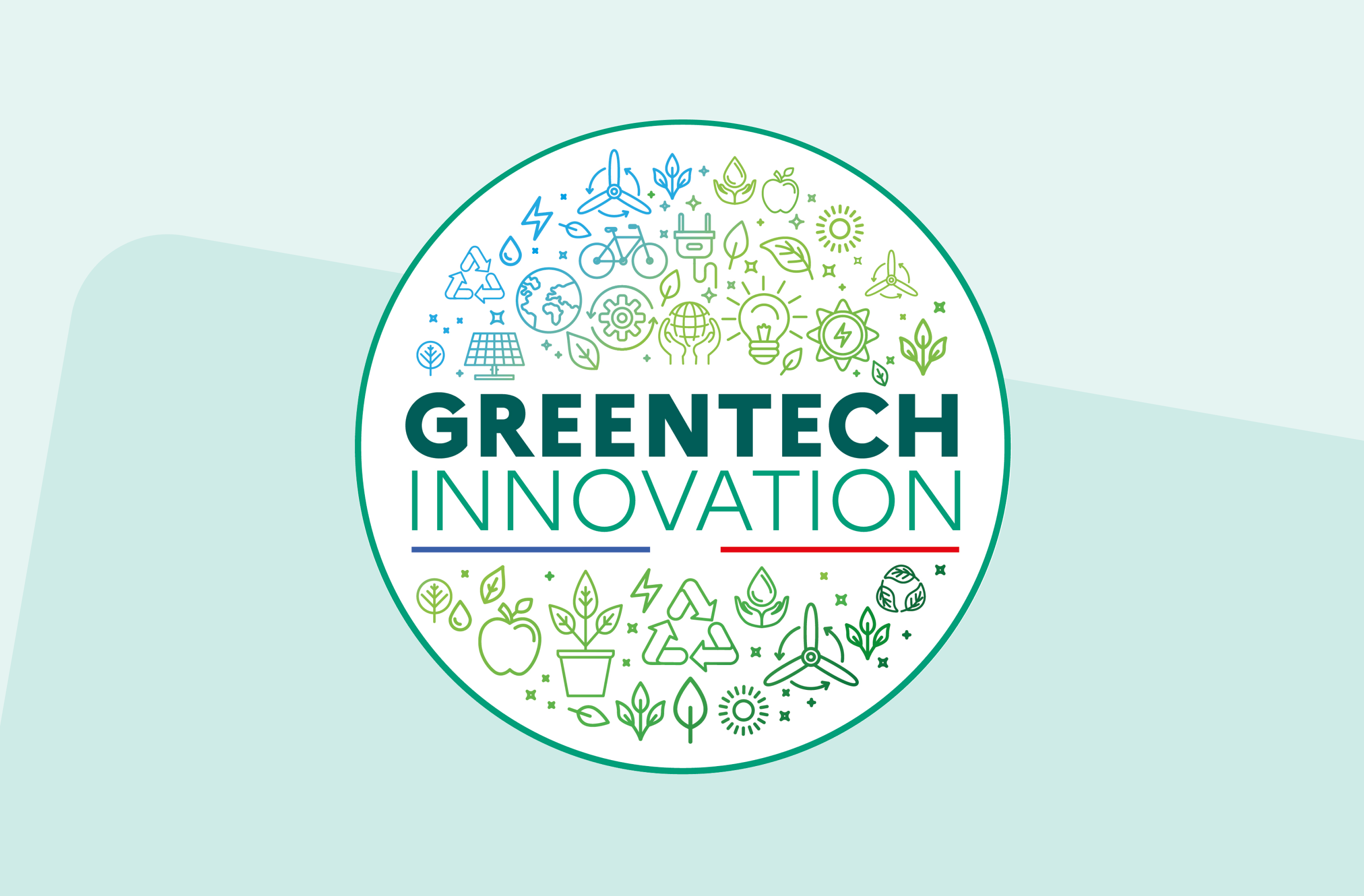L’économie circulaire : le fonctionnement de _rzilient

Découvrez notre solution tout-en-un
L’économie circulaire est un concept de plus en plus abordé, mais qu’implique ce modèle exactement ? Présentée comme la solution idéale pour réduire la consommation excessive et l’épuisement des ressources naturelles, l’économie circulaire s’appuie sur un schéma qui s’apparente à une boucle, loin du modèle traditionnel linéaire.
Écoconception, revalorisation, récupération, réemploi et recyclage sont les maîtres mots de cette démarche.
Mais comme le pointe du doigt le communiqué de l’association française des Entreprises pour l’Environnement (EpE) datant du 29 juin 2021, les freins sont nombreux au développement massif du modèle économique circulaire.
Ce sont ces obstacles qui justifient le fait que notre modèle global soit circulaire à seulement 8,6 % d’après le rapport de 2020 de Circle Economy.
Comment fonctionne l’économie circulaire ? Quel est son objectif ? Pourquoi intégrer de la circularité dans votre entreprise ? Est-ce que cette démarche s’inscrit dans la transition écologique ? rzilient vous livre quelques pistes de réflexion et vous présente son modèle d’économie circulaire dans la filière numérique.
Qu’est-ce que l’économie circulaire ?
Définition simple du modèle circulaire
Qu’est-ce que l’économie circulaire ? Voici une définition simple de ce modèle vertueux :
L’économie circulaire est une alternative au modèle économique dominant qui lui se base sur l’utilisation linéaire de ressources naturelles, de leur extraction à la production de déchets.
Selon l’ADEME, l’économie circulaire est un système économique d’échange et de production qui cherche, à tous les stades du cycle de vie des produits, à augmenter l’efficacité de l’utilisation des ressources et à diminuer l’impact sur l’environnement, sans oublier le bien-être des individus.
Ce modèle cherche avant tout à réduire les déchets et l’impact environnemental pour limiter l’empreinte carbone de l’entreprise mais aussi des utilisateurs et utilisatrices.
Si l’économie circulaire se développait majoritairement d’ici 2025, il pourrait y avoir une réduction de 83 % des émissions de gaz à effet de serre produites en Europe. De même, la consommation des ressources primaires pourrait baisser de 52 % selon la fondation Ellen MacArthur (en 2015).
Les valeurs et les 7 piliers de la circularité
Comment fonctionne le modèle d’économie circulaire ?
La boucle de valeur se crée sur 3 domaines principaux:
- l’offre des acteurs économiques ;
- la demande et le comportement des consommateurs et consommatrices ;
- la gestion des déchets.
Ce sont ces 3 pôles qui permettent la prévention et la gestion efficace des ressources, à condition de suivre les 7 piliers de l’économie circulaire.
Ces 7 piliers se découpent dans l’ordre d’optimisation suivant :
- l’approvisionnement durable : cela concerne le mode d’exploitation et d’extraction des ressources.
- l’écoconception : dès la conception d’un service ou d’un bien, il y a une prise en compte de la totalité du cycle de vie (l’ACV) avec une minimisation des impacts environnementaux.
- l’écologie industrielle et territoriale ou symbiose industrielle : c’est un mode d’organisation inter entreprises par des échanges de flux, ou une mutualisation des besoins, qui vise à optimiser les ressources sur un territoire. L’approche systémique prend modèle sur le fonctionnement des écosystèmes naturels.
- l’économie de la fonctionnalité : la possession est délaissée au profit de l’usage ; ce sont les services liés aux produits qui sont vendus et non les produits en eux-mêmes.
- la consommation responsable : le but est de conduire l’acheteur ou l’acheteuse à faire son choix de produit en prenant en compte les impacts environnementaux à toutes les étapes du cycle de vie du produit ou du service.
- l’allongement de la durée d’usage : privilégier la réparation, la vente, le don d’occasion ou l’achat d’occasion mais aussi le réemploi ou la réutilisation.
- le recyclage : dernière étape de la chaîne pour réutiliser les matières premières issues de déchets.
Les valeurs intrinsèques de l’économie circulaire sont donc la préservation de l’environnement grâce à une meilleure gestion des ressources premières et le vœu de réemploi plutôt que de création de produits neufs.

L’économie circulaire : l’avenir de la transition écologique ?
Transformer les déchets des uns en ressources des autres paraît être la solution parfaite pour rester dans la trajectoire des 1,5° préconisés par l’Accord de Paris sur le climat.
Le modèle de circularité tente de répondre aux enjeux d’une redirection écologique ; un concept qui sous-tend l’urgence de la situation et la nécessité de s’aligner rapidement sur les limites planétaires ; plus que la simple transition écologique ou notion de développement durable.
L’allongement de la durée de vie des produits, combiné à l’éco-conception, permettrait une réduction de 1,70Gt d’émissions de GES ainsi que la préservation de 3,95 Gt de matières premières. Pourtant, des obstacles et des freins existent.
Les obstacles à son développement généralisé
Les freins au développement de cette économie sont nombreux :
- la qualité et la quantité variables des matières secondaires ;
- la dispersion géographique des gisements de ces matières secondaires ;
- le manque d’accès à l’information ;
- l’absence d’une réglementation incitative ;
- les barrières psychologiques et les peurs.
Les investissements dans l’économie circulaire peuvent aussi être incertains car il y a des risques spécifiques liés à cette démarche, qui sont parfois même supérieurs.
Certaines barrières psychologiques demeurent. Pour beaucoup, l’économie circulaire est un modèle économique incertain. Ils n’osent pas s’y engager. C’est notamment le résultat d’un accès insuffisant aux données.
Grâce au Service des Données et des Études Statistiques (SDES) qui a mesuré l’évolution de 11 indicateurs couvrant les 7 piliers de l’économie circulaire, on peut voir les points qui fonctionnent, ceux qui sont en cours d’amélioration, et les autres qui stagnent.
Les 2 pôles qui s’approchent le plus rapidement des objectifs de l’économie circulaire sont :
- la productivité des matières ;
- l’accompagnement, par l’ADEME, des entreprises sur l’économie de la fonctionnalité.
Les 2 qui stagnent le plus et qui sont loin des objectifs sont ceux qui concernent :
- les dépenses ménagères consacrées à l’entretien et la réparation ;
- les déchets mis en décharge.
Ces 2 derniers semblent être le fruit de barrières psychologiques. Les consommateurs et consommatrices pensent sans doute qu’il est plus facile, plus rapide, moins coûteux de jeter et de racheter que d’essayer d’entretenir et réparer un produit.
Créer des partenariats est un facteur d’accélération et de développement de l’économie circulaire sur les territoires grâce à la diversité des acteurs, et actrices, réuni·es. Tout l’enjeu est de coordonner et de rapprocher des groupes économiques indépendants pour bénéficier de compétences ou de ressources complémentaires.

L’économie circulaire dans le secteur du numérique, la démarche de rzilient
L’empreinte carbone du numérique n’est plus un secret, la filière pollue beaucoup. Le meilleur moyen de diminuer l’impact environnemental et d’éviter le gâchis électronique reste le reconditionnement du matériel puisque le recyclage est difficile à cause des composants qui sont compliqués à extraire individuellement.
rzilient a pour objectif de s’inscrire pleinement dans une démarche d’économie circulaire afin d’introduire plus de circularité dans la filière numérique.
Les objectifs de cette stratégie circulaire
Si l’on reprend les piliers de l’économie circulaire mentionnés plus haut, on voit que rzilient œuvre à avoir une démarche circulaire sur 6 pôles de la boucle :
- la responsabilisation des consommateurs et consommatrices sur les impacts ;
- l’allongement de la durée de vie des appareils numériques ;
- l’économie de la fonctionnalité ;
- l’approvisionnement durable ;
- le recyclage et le reconditionnement ;
- l’écoconception.
En plus d’agir pour faire baisser les impacts environnementaux du secteur numérique, les missions de rzilient répondent aux enjeux de la responsabilité numérique des entreprises (RNE) et de la sobriété.
rzilient, avec sa position d’interlocuteur privilégié dans l’accompagnement des entreprises vers un numérique responsable, cherche à supprimer - sur le long terme - les déchets émis par la filière du numérique.
Pour ce faire, ils misent tout sur :
- la réutilisation ;
- la réparation ;
- le reconditionnement ;
- la remise à neuf.

Les piliers de l’économie circulaire de rzilient
L’allongement de la durée d’usage
Pour lutter contre la surconsommation numérique et l’obsolescence programmée, rzilient se concentre sur le reconditionnement et l’allongement de l’utilisation du matériel informatique.
Plus la durée d’utilisation du matériel informatique est longue, moins son impact environnemental lié à sa fabrication et fin de vie est conséquent. C’est un premier pas pour réussir la transition écologique numérique dans les entreprises.
De l’achat au recyclage ou reconditionnement, en passant par l’accompagnement, rzilient s’occupe de toutes les étapes, et ce même sur le matériel informatique que l’entreprise n’aurait pas placé.
Cet allongement de la durée est rendu possible par la responsabilisation et la sensibilisation sur le sujet. Car acheter avant de réparer reste la barrière psychologique principale à surmonter.
Vendre le service plutôt que le produit
Grâce à ses nombreux partenaires et à ses services, rzilient se place comme une alternative idéale pour réduire les déchets informatiques. Plus besoin d’acheter une flotte iT neuve, il est maintenant possible de passer par la location ou le leasing. La gestion devient éco-responsable grâce à des services intégrés et sur-mesure.
rzilient vend alors un service plus qu’un équipement : la sensibilisation, la mise en place d’un numérique responsable, la maintenance et la réparation. La démarche fonctionnelle prime sur la possession puisque l’on paye pour les performances du service.
Si l’on suit la typologie des business models circulaires, l’entreprise suit le schéma du “produit en tant que service”.
Les déchets électroniques baissent drastiquement grâce à ce modèle tandis que les relations avec les client·es et les fournisseurs augmentent.
Repenser le modèle économique permet d’ajouter de la valeur commune aux services vendus et donc de transformer en profondeur le schéma linéaire souvent associé au numérique.
Une démarche circulaire d’amélioration continue
rzilient contribue aussi à son échelle à créer de nouveaux emplois grâce aux postes de maintenance, de réparation et valorisation du matériel informatique en fin de vie.
De même, l’approvisionnement se fait de manière durable avec des reconditionneurs agréés.
Avec la mise en place d’un schéma circulaire, rzilient cherche à mettre en avant :
- la sobriété numérique ;
- la responsabilité numérique des entreprises (RNE) ;
- l’importance de l’usage avant la possession.
L’entreprise est dans une démarche d’amélioration continue. Pour pousser ce modèle économique de circularité plus loin, elle a bien conscience que les efforts doivent être communs avec tous les acteurs de la filière.
L’honnêteté et la transparence incarnent les fondements d’une économie circulaire et tracent la ligne de conduite de l’entreprise. Pour autant, même si l’entreprise est très fière des partenariats noués et de la prise de conscience quant à l’importance d’utiliser du matériel reconditionné ; le plus important reste la sensibilisation et l’allongement de la durée de vie du matériel.






